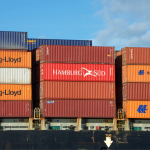Boxes vs. Bags: 3 Things to Consider in Packaging Goods
This is a guest post by Dakota Murphey
Note from the editor: While this article breaks from Universal Cargo’s traditional international shipping fare, it is still relevant for most of our readers as it gives things for businesspeople to consider when deciding which type of packaging is right for their goods. Packaging is even something we can help our customers with as part of our new warehousing services.
 Whether it’s loading up a shopping trolley with weekly groceries or collecting an online order from a courier, there are plenty of situations where we can’t help but ask, “Why is it packaged like this?!”
Whether it’s loading up a shopping trolley with weekly groceries or collecting an online order from a courier, there are plenty of situations where we can’t help but ask, “Why is it packaged like this?!”
As long as packaging is doing its job, we seldom give it a second thought. As soon as it fails – perhaps by splitting or becoming difficult to carry – we realise how much difference the right container makes.
If you’re launching a new product or planning a packaging redesign, don’t overlook this critical element. How you store, display, and sell your product might seem like it should be secondary to the product itself, but really, it’s telling your potential customers everything they need to know before they even get to the goodies inside.
Here are three key areas where your choice between bag or box can make a big difference.
Transportation
The amount of product you can get onto a pallet, store shelf, or delivery van will have a big impact on your shipping costs. For this reason, packaging that is light and compact (while still protecting the goods inside) is ideal. Boxes and bags can both be made out of materials that fit this brief, but will have other benefits and drawbacks too.
Cardboard boxes, for example, are lightweight and easy to stack. Little thought needs to go into how to arrange boxes on a pallet, shelf, or in the back of a van. It’s easy to create boxes that accommodate the dimensions of your goods. However, depending on the shape or consistency of your product, you may find that you need additional packaging to protect it from the rigidity of the boxes’ sides and from rattling around the empty space inside an over-sized box.
Bags are easier to compress together and the flexible packaging takes up far less space than a box. Vaccum-packing or adding air into the bag is a good way of preventing crushing without adding extra material. Despite this, it’s likely you’ll need some level of tertiary packaging (like a box) to properly contain shipments of bagged goods.
Sustainability
It’s more important than ever that your packaging is sustainable – not just for the sake of the planet, but for your bottom line, too. Consumers are much savvier about which packaging options are reusable and recyclable, meaning that an environmentally-conscious package is going to have more appeal than plastic or foil – providing it can do the same job.
It’s fairly easy for boxes to be made from paper, reinforced cardboard, or even corrugated cardboard to provide a rigid container for your goods. Providing that you don’t use a plastic coating, this is exceptionally simple for your consumers to drop into their recycling bins. Take care to use non-plastic packing materials too.
Bags, on the other hand, are not always so readily recyclable. The composite materials that combine plastic, paper, and foil are excellent for keeping an air-tight seal for food freshness, but fall down when it comes to sustainability. Choosing natural kraft materials is one option, but be aware of any inner coatings and closures that may still contain plastic. If bags are by far the most effective packaging for your product in every other respect, it’s maybe worth investigating in some of the biodegradable options that are on the market.
Prestige
The structure of a box can make it feel more luxurious than the loose, flexible packaging of a bag. Of course, this will be somewhat dependent on the quality of the materials and construction design of the box, but it’s something that can easily be used to your advantage.
Inviting your customer to open the lid on a well-crafted, thoughtfully designed box — typically revealing an equally well-packaged inner layer — builds anticipation. It relays the message that your product is something worth waiting for. It also indicates that more care has gone into housing your products, suggesting that more care has gone into the products themselves by association.
By comparison, the convenience and availability of bagged containers (both for the customer and producer) makes the experience of opening a plastic, air-filled container much less special. There’s a reason why there’s a trend for ‘unboxing’ videos, rather than ‘unbagging’ ones!
This was a guest post by Dakota Murphey.





